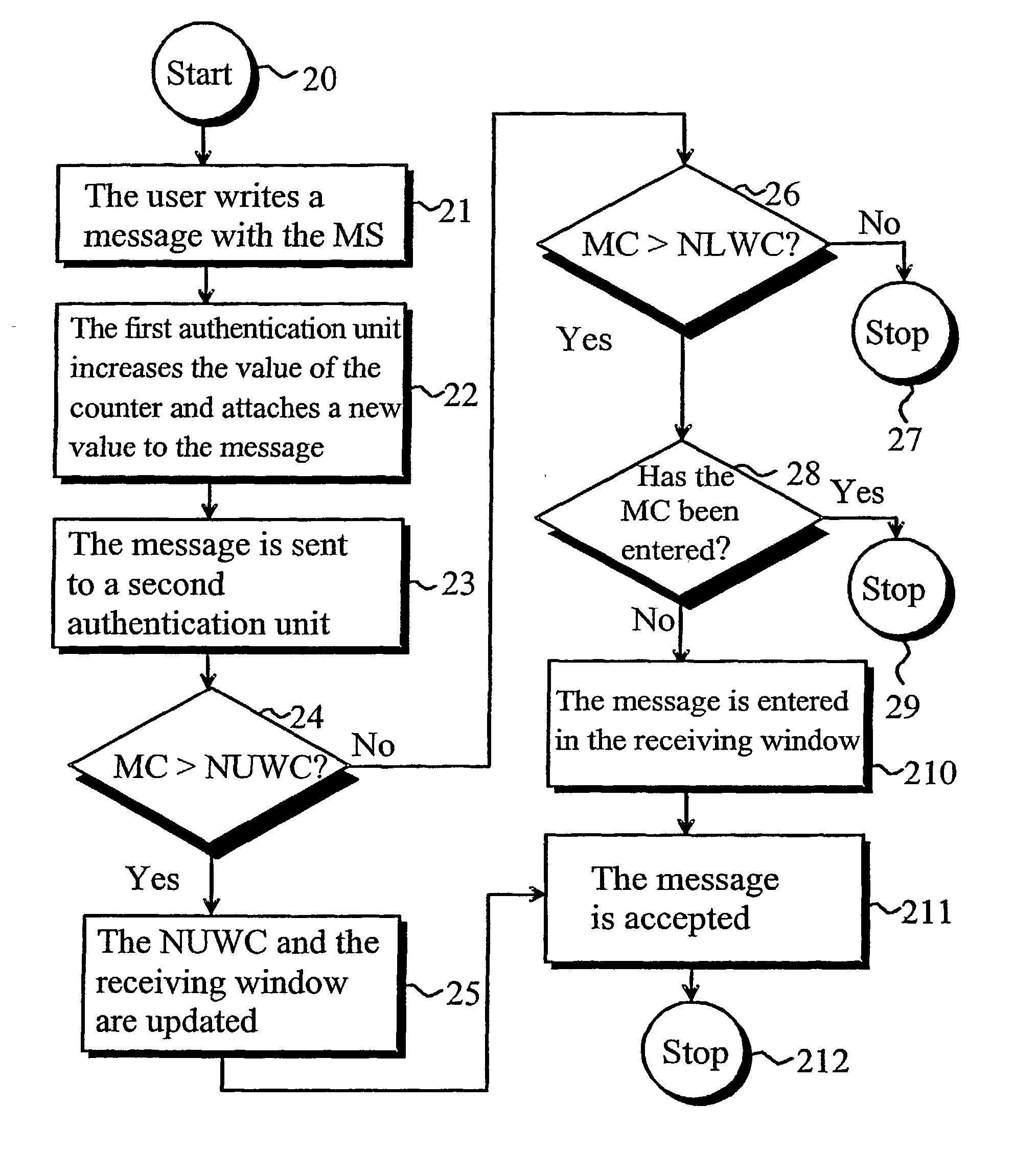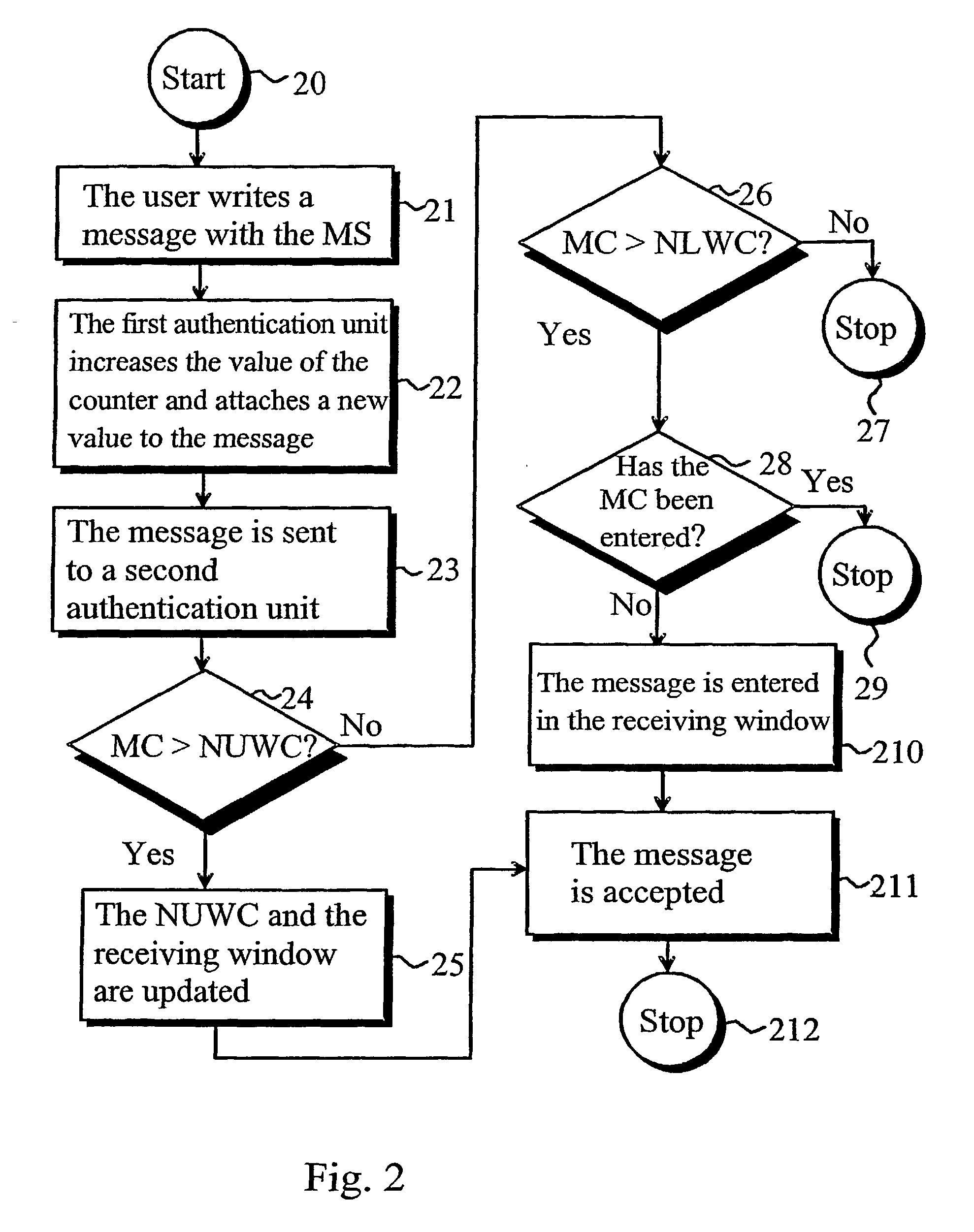Method and system for identification of digitally signed messages in a telecommunication system
a digital signature and telecommunication system technology, applied in the field of telecommunication systems, can solve the problems of message loss or disappearance, change in the order of message receipt, message transfer delay, etc., and achieve the effect of reducing drawbacks and deficiencies
- Summary
- Abstract
- Description
- Claims
- Application Information
AI Technical Summary
Benefits of technology
Problems solved by technology
Method used
Image
Examples
Embodiment Construction
[0025] FIG. 1 illustrates a system implemented in accordance with the invention. A mobile station MS includes a first authentication unit FCU, which may by way of preferred example be disposed in or on the subscriber identity module (SIM) of the mobile station. The mobile station MS is connected to a network server NS via a telecommunication network MCN. Network server NS includes a second authentication unit SCU which is connected to a database DB. Database DB contains a stored list, for each mobile station of or associated with the network, of identification numbers of or that have been attached to theretofore received messages from the each mobile station. The second authentication unit SCU processes each received message sent by the mobile station and confirms the reliability of the message by consulting the stored list of identification numbers. The message is deemed to be incorrect or unreliable, and is therefore rejected, if it is determined to have arrived too late or to be ...
PUM
 Login to View More
Login to View More Abstract
Description
Claims
Application Information
 Login to View More
Login to View More - R&D
- Intellectual Property
- Life Sciences
- Materials
- Tech Scout
- Unparalleled Data Quality
- Higher Quality Content
- 60% Fewer Hallucinations
Browse by: Latest US Patents, China's latest patents, Technical Efficacy Thesaurus, Application Domain, Technology Topic, Popular Technical Reports.
© 2025 PatSnap. All rights reserved.Legal|Privacy policy|Modern Slavery Act Transparency Statement|Sitemap|About US| Contact US: help@patsnap.com



